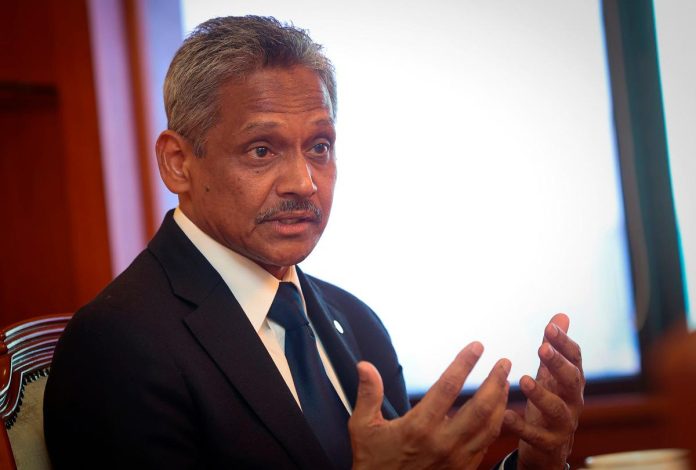KUALA LUMPUR: Bank Negara Malaysia (BNM) Governor Datuk Seri Abdul Rasheed Ghaffour has expressed optimism that Malaysia’s economy remains on a strong growth trajectory due to multiple factors, such as resilient domestic demand and encouraging exports of electrical and electronic (E&E) products, despite headwinds from impending tariffs.
The central bank governor said today that among the combination of positive factors supporting the economy are the frontloading of exports in the first six months, robust tourism activity that could raise Malaysia’s export prospects, low unemployment and rising wages.
Moreover, he highlighted that about 85 per cent of Malaysia’s exports go to markets other than the United States (US).
While uncertainties remain, particularly surrounding the final shape and scale of the US tariffs, BNM’s revised growth forecast of 4.0 per cent to 4.8 per cent has taken into account multiple scenarios, including potential trade disruptions.
“We have accounted for a range of tariff scenarios, including both favourable and less unfavourable trade negotiations outcomes as well as pro-growth policies in major economies.
“A diversified export structure will help contain the direct effect from the US, as around 85 per cent of exports are to non-US markets, and no single market accounts for more than 15 per cent of Malaysia’s exports,” he told Bernama in an exclusive interview.
Abdul Rasheed noted that Malaysia’s exports are spread across a wide range of products, consisting of E&E (40 per cent), non-E&E manufacturing goods (46 per cent) and commodities (14 per cent).
He said almost half of the demand for Malaysian exports comes from Advanced Asia (19.4 per cent) and ASEAN countries (29 per cent).
Domestically, Abdul Rasheed highlighted that domestic demand drives more than 90 per cent of Malaysia’s economic growth.
“Consumption is still resilient despite the tariff announcement, it’s still resilient because income is still growing. Wages are still on an increasing trend, he said.
In terms of unemployment, Abdul Rashee said that the rate is at three per cent and is lower than before the Covid-19 pandemic.
“People have jobs. These are things that will support the consumption,” he said, adding that the government’s ongoing policy support measures remain in place and support the growth.
On July 23, Prime Minister Datuk Seri Anwar Ibrahim announced a cost-of-living relief package, which includes a one-off RM100 SARA cash aid, a reduction in the RON95 fuel price, toll hike postponements, and an expanded Rahmah Madani Sales allocation.
“This will also provide some kind of spending from the rakyat and drive our domestic consumption,” he added.
Turning to investments, Abdul Rasheed said Malaysia recorded RM378 billion in approved investments last year, with over half coming from domestic sources.
He said these are tied to long-term national development plans and are expected to sustain momentum through this year and into 2026.
In terms of exports, which are likely to be moderate in the second half of 2025 (2H 2025) as tariffs take effect and global growth slows, BNM expects E&E exports to continue supporting growth.
Abdul Rasheed said this is underpinned by resilient demand for E&E and emerging opportunities in the artificial intelligence-related segment.
“So this is where I think the question comes on tariffs. Exports will definitely be affected; everything in the world will be affected. However, if you look at global trade numbers, they are still growing.
“Despite the challenging global environment, exports remained supportive of growth in 1H 2025, helped by robust growth in E&E exports.”
“Frontloading activities ahead of anticipated tariff increase contributed to stronger export performance in the second quarter of 2025, although this has tapered down particularly in June,” he said.
Abdul Rasheed highlighted that inbound tourism was also expected to provide support for exports in 2H 2025, driven by higher flight connectivity, visa exemptions and promotional activities leading to Visit Malaysia 2026.
He said international visitor arrivals into Malaysia were 16.9 million from January to May 2025, which is 20 per cent higher than the same period in 2024.








